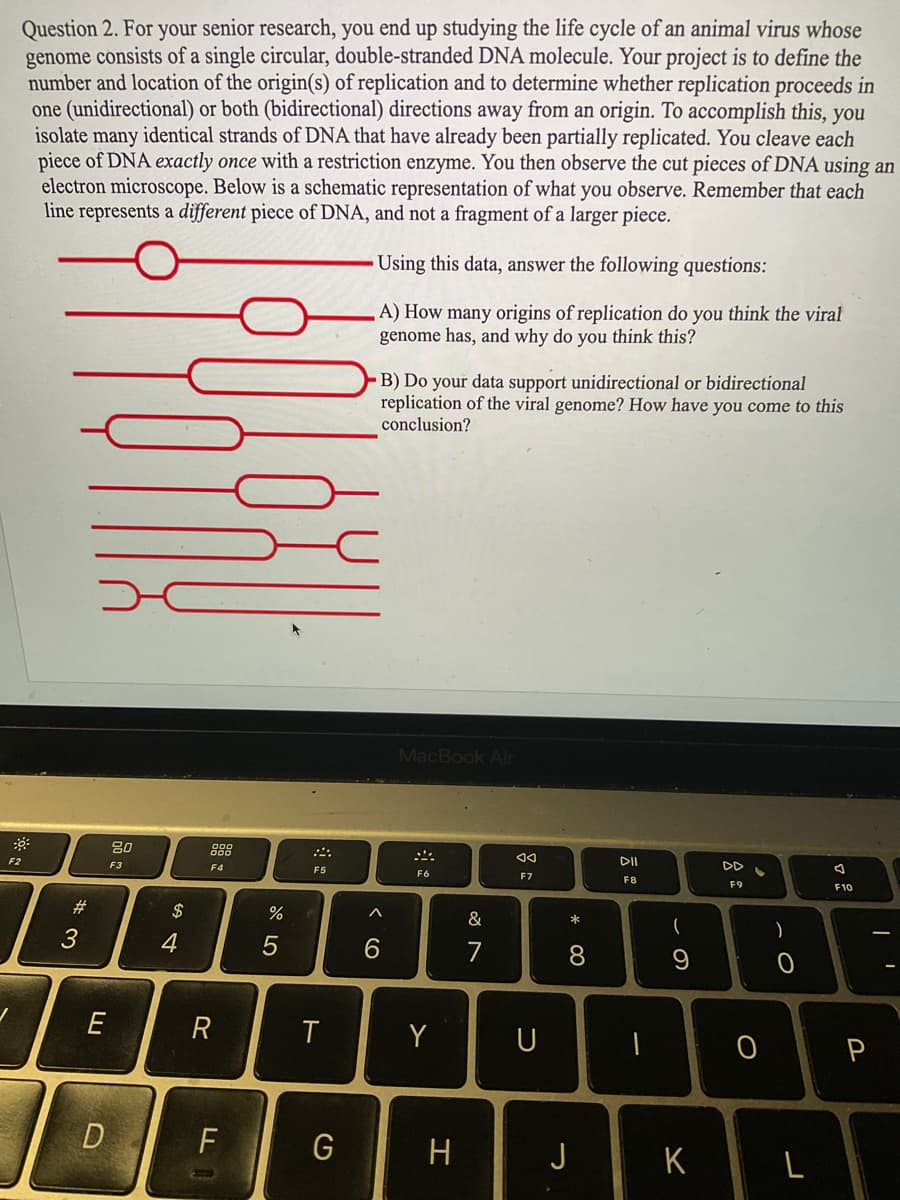A) How many origins of replication do you think the viral genome has, and why do you think this? B) Do your data support unidirectional or bidirectional replication of the viral genome? How have you come to this conclusion?
A) How many origins of replication do you think the viral genome has, and why do you think this? B) Do your data support unidirectional or bidirectional replication of the viral genome? How have you come to this conclusion?
Biology 2e
2nd Edition
ISBN:9781947172517
Author:Matthew Douglas, Jung Choi, Mary Ann Clark
Publisher:Matthew Douglas, Jung Choi, Mary Ann Clark
Chapter14: Dna Structure And Function
Section: Chapter Questions
Problem 29CTQ: DNA replication is bidirectional and discontinuous; explain your understanding of those concepts.
Related questions
Question

Transcribed Image Text:Question 2. For your senior research, you end up studying the life cycle of an animal virus whose
genome consists of a single circular, double-stranded DNA molecule. Your project is to define the
number and location of the origin(s) of replication and to determine whether replication proceeds in
one (unidirectional) or both (bidirectional) directions away from an origin. To accomplish this, you
isolate many identical strands of DNA that have already been partially replicated. You cleave each
piece of DNA exactly once with a restriction enzyme. You then observe the cut pieces of DNA using an
electron microscope. Below is a schematic representation of what you observe. Remember that each
line represents a different piece of DNA, and not a fragment of a larger piece.
Using this data, answer the following questions:
A) How many origins of replication do you think the viral
genome has, and why do you think this?
30:
F2
#3
***
E
D
80
F3
54
$
4
F4
R
LL
%
5
F5
T
G
B) Do your data support unidirectional or bidirectional
replication of the viral genome? How have you come to this
conclusion?
A
6
MacBook Air
F6
Y
H
&
7
◄◄
F7
U
* 00
8
J
DII
F8
-
(
9
K
DD
F9
0
)
0
L
A
F10
P
Expert Solution
This question has been solved!
Explore an expertly crafted, step-by-step solution for a thorough understanding of key concepts.
This is a popular solution!
Trending now
This is a popular solution!
Step by step
Solved in 3 steps

Knowledge Booster
Learn more about
Need a deep-dive on the concept behind this application? Look no further. Learn more about this topic, biology and related others by exploring similar questions and additional content below.Recommended textbooks for you

Biology 2e
Biology
ISBN:
9781947172517
Author:
Matthew Douglas, Jung Choi, Mary Ann Clark
Publisher:
OpenStax

Biology 2e
Biology
ISBN:
9781947172517
Author:
Matthew Douglas, Jung Choi, Mary Ann Clark
Publisher:
OpenStax